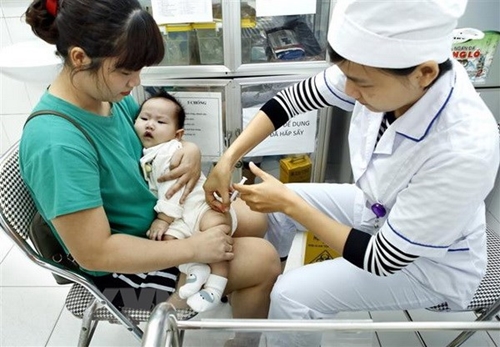That was the warning from Nguyen Nhat Cam, Director of the Hanoi Disease Control Centre.
In the first five months of 2019, Hanoi saw 1,300 cases of measles, 20 times higher than the same period last year and the number continues to rise.
In 2018, the percentage of fully vaccinated children under one-year-old in Hanoi only reached 85 percent, he said.
    |
 |
|
Hanoi’s students will be fully vaccinated in coming school year. (Photo for illustration) |
The “5-in-1” vaccine that can help fight against five common, potentially fatal diseases affecting infants - diphtheria, tetanus, whooping cough, hepatitis B and Haemophilus influenza type B has been used less than other types of vaccine, therefore, not only measles but also the other infections are about to rise, Cam added.
In some other provinces, the rate of “5-in-1” vaccine injection only reach 30 percent of the initial plan, making it the most unwanted vaccine in the national expanded immunisation programme.
Meanwhile, diseases breakouts are being reported in many localities. Some 4,000 cases of measles have been found in 62 of 63 provinces including one death in Hai Duong province.
Hanoi reported the first patient with Japanese encephalitis in May and the number of infected people may keep rising as the disease’s peak season will continue to August.
“We have proposed some solutions to the city authorities which have been approved. The problem now is how to implement them,” he said.
In the coming school year, local medical facilities and schools will monitor the vaccination status of students. Those who have not received enough required injections will be administered at school.
In Vietnam, the Law on Education does not ban unvaccinated students from school.
“It is crucial to have a mechanism which can ensure children are fully vaccinated,” Cam said.
According to the General Department of Preventive Medicine, 54 percent of children infected with measles are unvaccinated while the vaccination status of the other 43 percent remains unknown. Only 3 percent of patients were administered vaccines.
Source: VNA